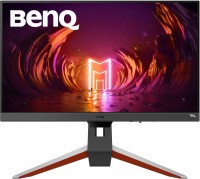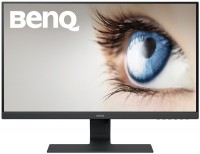Monitors BenQ series PD (design and graphics)
prices on 11 modelsBenQ PD Series
Unlike other manufacturers of peripherals, the Taiwanese brand BenQ believes that monitors for designers and photographers are completely different things that should be released in different series. Therefore, an unprepared reader has a fair question: how do PD monitors differ from the BenQ SW models?
If you run through the characteristics, it may seem that both lines are formally suitable for both designers and photographers. But the devil, as usual, is in the details. Monitors for photographers are usually factory calibrated and designed to work in the sRGB and Adobe RGB colour spectra. In turn, the ability of the monitor to operate within the sRGB, Rec. 709 and DCI-P3 colour triangles is more important for designers. Also, built-in Thunderbolt ports are much more common in the BenQ PD models.
 |
Otherwise, the engineers of BenQ approached the matter with the utmost seriousness and the expectation that their products will be able to compete adequately with the market leaders. Top-end PD versions provide reference colour reproduction, confirmed by Pantone and CalMAN certification. Spice it up with high-resolution, optional HDR support and get a high-class and at the same time universal toolkit for the designer.
As for the model range, the PD series range is dominated by 27- and 32-inch monitors with a resolution of 2K or 4K. Side by side with them are slightly more affordable 24/25-inch monitors 2016 – 2018 release a la BenQ PD2500Q. In 90% of cases, IPS matrices and their varieties like AH-IPS are used in models of this series. The list of other advantages of this series includes a familiar USB hub with fast charging, a built-in card reader, removable side curtains and built-in speakers.






